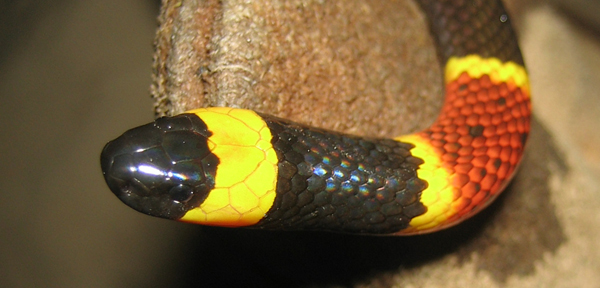- info@wildlifeanimalcontrol.com
Call us for help in your town
Wildlife Control Education
The Deadliest Snake in the United States
There are only about 20 venomous snake species living in the United States, which is good in a sense because it means when you come across a rogue snake, it’s not likely to be a dangerous one. There are hundreds of different non-venomous snake varieties living across the states. The majority of the ‘most dangerous’ or ‘most venomous’ snakes are actually not found in the USA at all - the Inland Taipan, for example, can only be found in Australia. There are ZERO snakes on the top-ten dangerous / venomous snakes list that can be found in the US. The ones that you can find in the US include the copperhead, the cottonmouth or water moccasin, two different types of coral snake, and different species of rattlesnake. With the exception of Hawaii and Alaska, every state across the USA has at least ONE species of venomous snake. It’s the diamondback rattlesnake that proves to be the biggest culprit, both the eastern and western species, although the copperhead snake is said to bite more people. The venom of the latter isn’t strong enough to kill or seriously injure a human. Texas and Florida are the states most populated with snakes, venomous or otherwise, and this is because of the warm and dry climates. The majority of venomous snakes can also be found in these two states.

There are three basic snakes in the United Sates that are marked to be the deadliest. Many people die because of these snakes every year. The number of snake bites per year is 45,000 however, only 18 percent of these bites are poisonous. Below we have created the list of three most dangerous snakes in the country.
Coral Snake
Coral snake is famous for its relationship with the world threating snake, Cobra. It is said to be its cousin and it has the most dangerous venom. You can find Coral snake in the southern part of United States. They cover the region starting from Florida to Arizona. So, people living there should be caution of these deadly snakes. Make sure you keep your eyes on the ground as these snakes are very small. The biggest coral snake you could come across would be 39 inches. Due to their size, their fangs are not very big, thus most of the time they don’t penetrate the skin of their victim. Less than one percent of the deaths are caused because of Coral snake bites. However, if the venom does enter your body, it will disrupt your respiratory system. It’s easy to identify a Coral snake as it has three different color bands. The yellow always separates the red and the black band.
Rattlesnakes
Mojave rattlesnake is the most dangerous type of rattlesnakes, according to Jules Sylvester. The venom of Mojave can lead to instant death if the correct antivenin isn’t given in time. The worst part about this snake is that they hate humans, so they will bite without provocation. The amount of venom released by the snake makes it dangerous rather than the venom itself. Rattlesnake venom is not considered to be very dangerous venom. The type of venom secreted by a rattlesnake is haemotoxic and it destroys the tissues and makes the blood very thin, thus preventing blood clotting. Pygmy, rock, timer, sidewinder, western diamondback, eastern diamondback are a part of the Mojave rattle family. These snakes are 50 inches or less long and they have a distinguishing rattle at the end of their tails. These snakes are very fast, they take their prey by surprise and they can strike from a long distance.
Find out more: Ways to kill a snake in the yard.
Cotton mouth
Cotton mouth or sometimes known as water moccasin isn’t a very deadly snake. However, it is among the most aggressive snakes. The reason behind it being a deadliest snake is its aggressiveness rather than its venom. The snake will bite you if you provoke it, but there are many who say they sometimes even flee. Their bite can result in gangrene and their venom is haemotoxic. The snakes seem to be in love with the water. It lives in rivers, lakes ditches and swamps. You can most found them in the southeast side of the country. The length of the snake ranges from 2 and half to four feet long.
Go back to the How to get rid of snakes home page.
Need snake removal in your hometown? We service over 500 USA locations! Click here to hire us in your town and check prices - updated for year 2020.

















